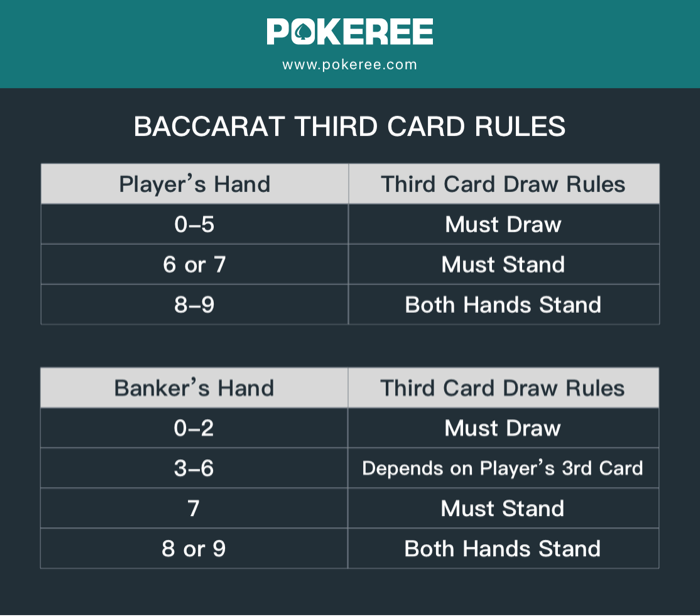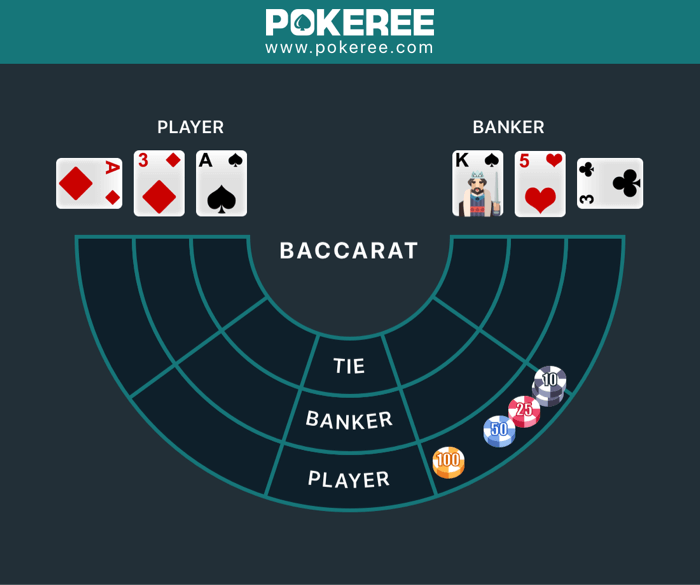|
Baccarat
|
IntroductionBaccarat is a casino banking game that dates to the 19th century in France. The most widespread version of Baccarat, Punto Banco, is now one of the most popular games in casinos around the world. It is a card game in which two hands compete, the "player" and the "banker." The objective of Baccarat is to bet on a hand that you believe will be close to or equal to 9. With a house advantage of at least 1%, the odds are tilted in favor of the bank.
Card Value1. The cards 2 through 9 are counted according to their face value.
The value of a hand is determined by the last digit of the total of its constituent cards. A hand with the numbers 2 and 3 is worth 5, whereas a hand with the numbers 7 and 9 is worth just 6. (6 being the last digit in the combined points total of 16). In baccarat, the highest possible hand value is 9.
BettingThey are three betting choices to select from: "Players," "Bankers," and "Tie." Every bet has a different house edge. In addition to controlling the game and handling the bets, the dealers are responsible for keeping track of the commission that each player must pay. There are usually commission boxes in the center of the Baccarat table, which are specifically designed for this purpose.
The caller is the only one who pays commissions, with every player who bets on "Bankers" paying the house a 5% commission. Players that place the correct bet are paid even money from both "Bankers" and "Players." Players that bet on the "Bankers" side, on the other hand, will be responsible for paying the commission if they win.
A tie usually pays out 9 to 1 or 8 to 1, depending on the house rules. With a casino edge of almost 14%, this bet is the least profitable. In the long run, this is not a smart choice.
Natural and the Third-Card RuleA 'natural' is a hand where the first two cards have a value of 8 or 9, which means it immediately wins and no additional cards are dealt. The hand with the highest value wins if both the banker and the player have a natural. If both naturals have the same value, the game is a tie, and no one wins. The chart below determines the third-card rule.
Example HandA $100 bet is placed on the player. After 4 cards are dealt, the banker receives a King and a five for a hand value of 5. The player receives a three and an Ace for a hand value of 4. Because his hand value is between zero and five, the player is automatically dealt a third card, an ace, for a total hand value of five. The Banker now draws a card and receives a 3, bringing the total hand value to six, according to the third card rules. The banker's hand wins, you get paid one-to-one, with the casino collecting a 5% conversion commission. As a result, the winning amount is $95 out of a total of $100.
Comments 0
Send
|



